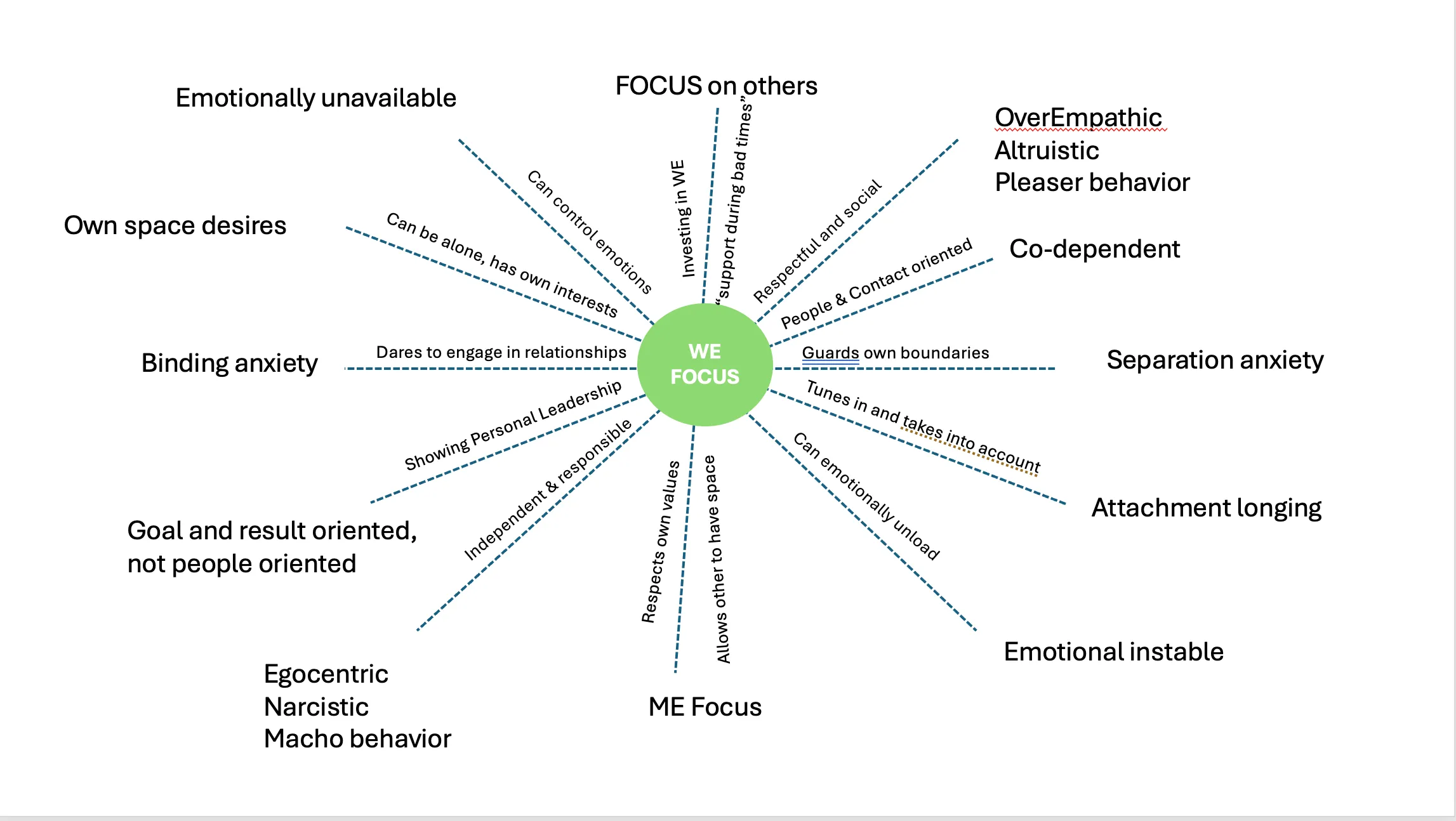Self-awareness, Relationships & Life Choices
7Qi Coaching @HOME
Attachment
Powerful insights and articles on attachment patterns
7QiCoaching @HOME: honest, practical and reliable insights from more than 20 years of coaching experience
Bookmark this page now so you can continue reading at another time!
Discover the impact of attachment patterns on relationships and health in your daily life and how to break insecure attachment!
What are (insecure) attachment patterns?
Attachment patterns form the basis of how we form relationships, both with others and with ourselves. Whether you are aware of your pattern or not, it affects your interactions, emotions and the trust you have in relationships. This is why your attachment pattern and that of others is so essential to your life's happiness!
As a result of a disturbed or unsafe emotional bond between your parents and you, what we call an insecure attachment style can develop. This can lead to problems in trust, emotional regulation and relationships later in life.
Consider parents who were controlling, very demanding, authoritarian, or anxious and overprotective, or aggressive or just absent (physically due to work, or emotionally flat and difficult to gauge). As a child, in response to their behavior, you learned to suppress emotions and adjust your behavior in hopes of still receiving love.
About 50% (!) of us are not securely attached, and we can say that the impact of insecure attachment is vastly underestimated. Insecure attachment is a form of developmental trauma that (often unconsciously) plays an important role in your life. The impact of insecure attachment on yourself and others is something that can really control your life and the world around you.
“Your world is seen through the eyes of your attachment pattern.
It affects your behavior and beliefs, the way you interact with others and even your physical health!
The 4 basic patterns of attachment (styles):
Secure Attachment
Anxious Pre- occupied Attachment
Avoidant Attachment
Dis- organised Attachment

In this image you can see the 4 attachment patterns and their main characteristics
50% of us is insecure attached!
The theory of attachment patterns was developed by John Bowlby, a British psychologist and psychoanalyst. Later Mary Ainsworth and then Mary Main built on it (particularly on how attachment manifests itself in adults).
In 1978, the number of securely attached children was still 70%. You often see this number today, but recent studies show that the percentage of safely attached children is lower than previously believed.
A 2023 meta-analysis, published in the Psychological Bulletin of the American Psychological Association, analyzed data from 285 studies and found that about 50% of children have secure attachment styles and therefore also 50% have insecure attachment styles (!) due, for example, to increased parental stress, higher divorce rates and less stable family structures.
Insecure Attachment figures increase!
To this can be added that by ever increasing speed of life, work pressure, (choice) stress and pressure, distractions and impulses (by AI and social media, among others) and violence on media (in movies and images of aggression and violence in the world, and focus of news on crime and violence) this number will most likely further negatively affect.
This creates a vicious cycle: increase in insecure attachment fuels misunderstanding and reactive behavior in relationships between people. The result is more violence or isolation behavior.
High time for more attention to attachment patterns and breaking insecure attachment!
7Qi Empowerment from your challenge and silverlining:
Attachment theory often focuses on trap behavior. But 7Qi Coaching @HOME gives attention to affirmation in attachment: what is the challenge in disability, and what is the positive aspect to something that seems negative?
That's usually where your learning point and insight is! From a spectrum thought (you can be a little of something to a lot of something). Things are usually not black and white but have a shade of gray.
In the image below you see “the perfect other” (which of course doesn't exist!). At the end of the lines you can see the pitfalls of all attachment patterns. The central green 'sun' has a WE focus. I and YOU, in other words. With all attachment and relational traits as the center.
What pitfall behavior do you discover in yourself? and what do you see as a challenge or strength on the dotted line?
Where is your challenge and empowerment in this picture?

Insights and articles on (insecure) attachment
Attachment Styles
Impact of Attachment, Relationship Dynamics and Therapy
Read
about
Attachment patterns
This page about attachment patterns is a page provided by
7Qi Coaching @HOME
7Qi is a method for looking integratively at your challenges and living more confidently. Although the coaching practice is closed indefinitely, this site contains information and articles on topics that may be of use to you!
I wish you much success and especially love and joy on your life path!
Navigate:
HOME PAGE 7Qi Coaching
SelfAwareness Course (temp FREE!)
Attachment Page (this page)
COPYRIGHT (c): 2008-2025 7Qi coaching All rights reserved




















